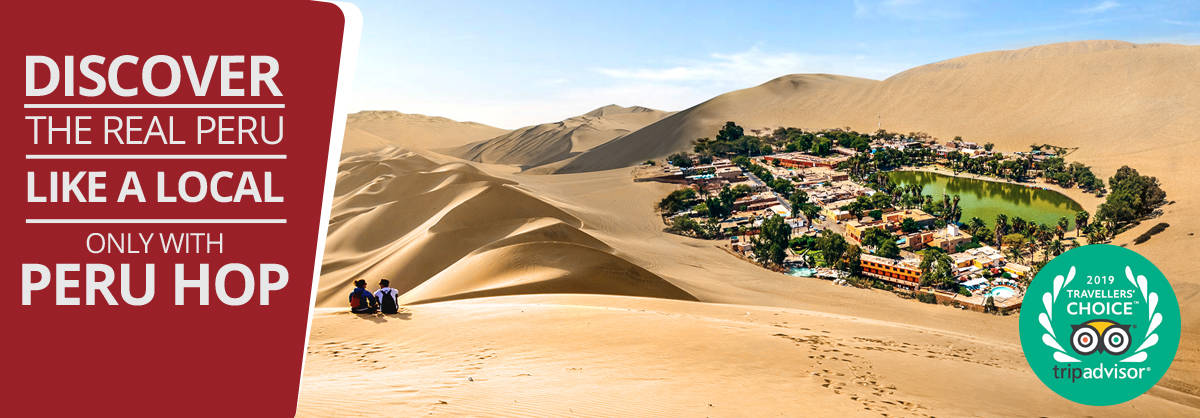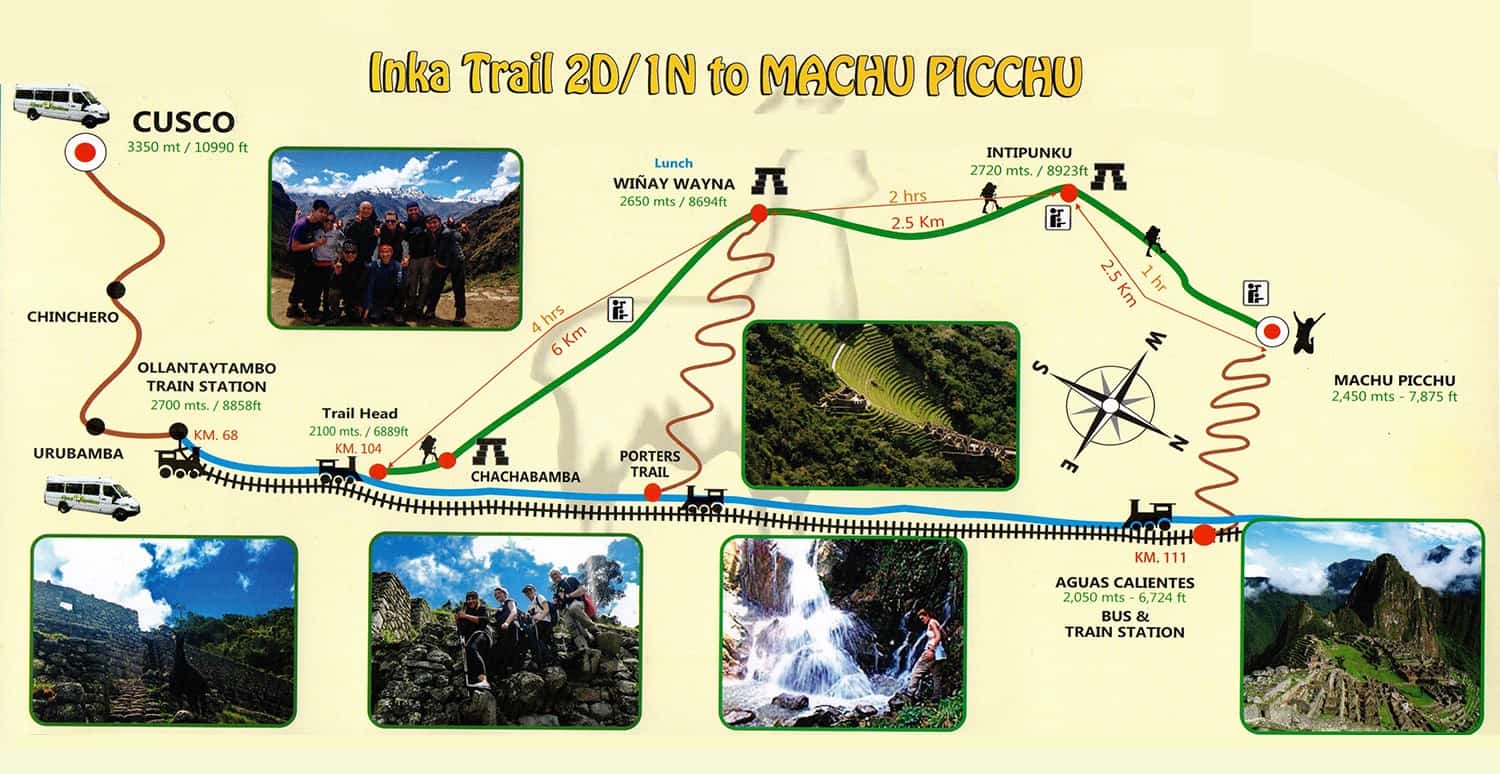Review: 2 Days / 1 Night Inca Trail to Machu Picchu
July 28, 2017Is the 2-Days / 1-Night Inca Trail to Machu Picchu really worth the hike? Or, should you just go for the full 4-days trek and experience the full fat version of the trail? Last week, I managed to get out from behind my desk and complete the 2-Days / 1-Night trail. Let me tell you what you need to know about the trail, and what to expect.
Having worked in the Peruvian tourism industry for 10 years, I am ashamed to say that in all that time, I have never actually hiked the 2-Days / 1-Night Inca Trail. I have been lucky enough to hike the full 4-days version several times previously, but the shorter version has always eluded me until now. Let me tell you a little more about the trail, and help you decide if it’s for you or not!
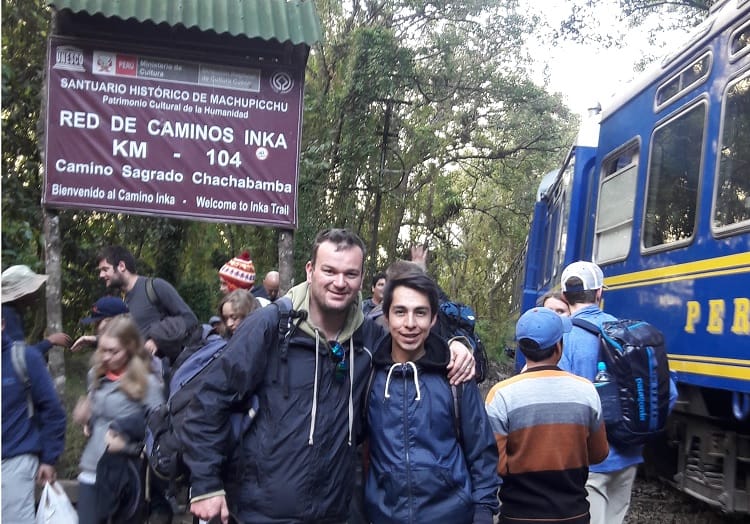
Me & Lucho at KM 104, the Trail head of the Inca Trail
Is it a 2 Days or 1 Day Hike?
The government issued permit that is needed to hike the trail, includes entrance to the trail itself, and then the following day a single entrance to the citadel of Machu Picchu. So technically it is known as the 2 Days / 1 Night Inca Trail, but in reality, you only have 1 full day of hiking.
What to Expect
The 2 Days / 1 Night Inca Trail starts with a train ride from Ollantaytambo Train Station (in the Sacred Valley) to the trail head at KM104 of the train line to Machu Picchu. Here at the small hidden ruin of Chachabamba, the early morning train stops to allow passengers to disembark, before it continues to Machu Picchu. Here you will cross a small bridge spanning the Valcanota River, and onto the Inca Trail check-point.
After a military style check of your passport and trekking permits, access to the trail is granted. Facilities here are limited, but there are some basic toilets, and a few local folk selling water and snacks.
After taking a moment to appreciate the small ruin of Chachabamba, the trail ascends gently and continually for the next 3 hours to the secluded mountain-side ruin of Wiñaywayna. This section of trail is about 6 km (3 3/4 miles) long, and ascends some 600 meters (1,969 feet) in altitude. The path is a mix of dirt track and stone. Although you’ll most likely start trekking around 8.30 or 9am, the sun is already intense, and you’ll feel the heat and humidity in this semi-tropical jungle region. 1-Hour into the trek, you’ll still hear the clickity clack of the train line far below, but now up ahead on the mountainside, you’ll have the first glimpses of the majestic Inca ruin of Wiñaywayna. Further up the mountain to the right of Wiñaywayna, you’ll also see the Intipata ruin, an impressive set of steep agricultural terraces.
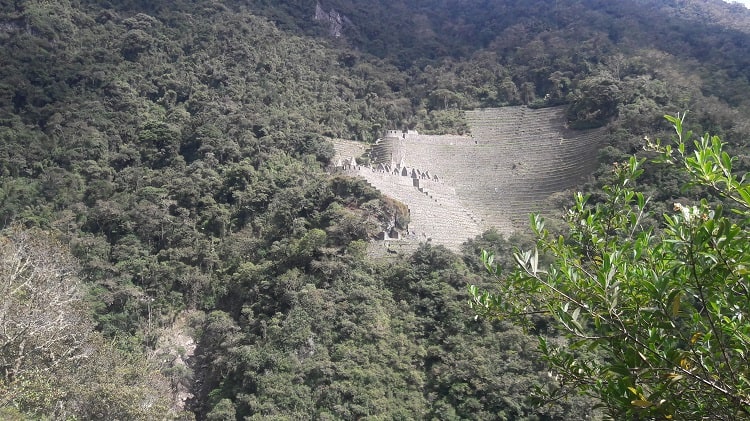
Wiñaywayna Ruin in the distance
After nearly 3 hours of trekking, you’ll reach a huge water fall, where the path continues into a slightly damp and shaded area of the trail. Then, from one extreme to the other, you’ll emerge suddenly, heading into the sun-filled green terraces of the Wiñaywayna complex. This sprawling complex of well-maintained agricultural terraces, also features an intricate irrigation system, residential buildings and ritual baths. Only Inca Trail hikers will get to experience this beautiful ruin, so be sure to take some time to absorb the structures, the location and the tranquility of the area. Wiñaywayna is a real highlight of the 2-Days / 1-Night Inca Trail, and most likely you will only be one of a handful of people visiting the site at any one time. Continuing, the trail ascends steeply up through stone stairways that connect the agricultural terraces of Wiñaywayna. This section is probably the toughest part of the trail, so expect to find yourself breathing heavily (all the time), and expect to feel the burn in your calf muscles well before you reach the top.
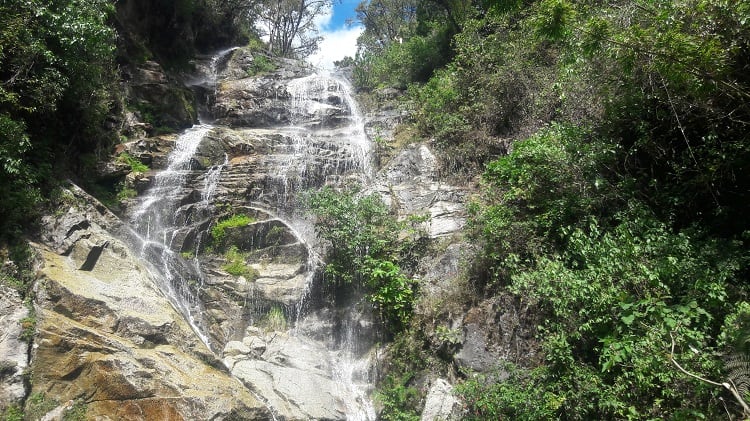
Beautiful Waterfall

The campsite of Wiñaywayna awaits you, where you will stop for lunch (usually a box lunch). This campsite is the final campsite of the 4-days Inca Trail, so you’ll see porters from various trekking groups setting up camp, ready for the night.
The final section of the trail continues to Intipunku, also known in gringo lingo as the Sun Gate. This section of the trail takes about 90 minutes, and follows an undulating path, which is moderately challenging in places. This section of the trail increases in altitude by just 150 meters (492 feet), over a distance of 3.5 km’s (2 1/4 miles). Here the trail can get narrow in places, with the mountain face on your left and sheer drops to your right. Walking with care is essential on this section of the trail, as a wrong footing could easily lead to a sticky end (and has done for some eager trekkers). On approach to the Intipunku, you’ll face one last challenge that the Inca Trail throws at you. A set of some 30 massive stone steps in a nearly vertical inclination need to be scaled. Once at the top, another 5 minutes takes you onto the Intipunku.
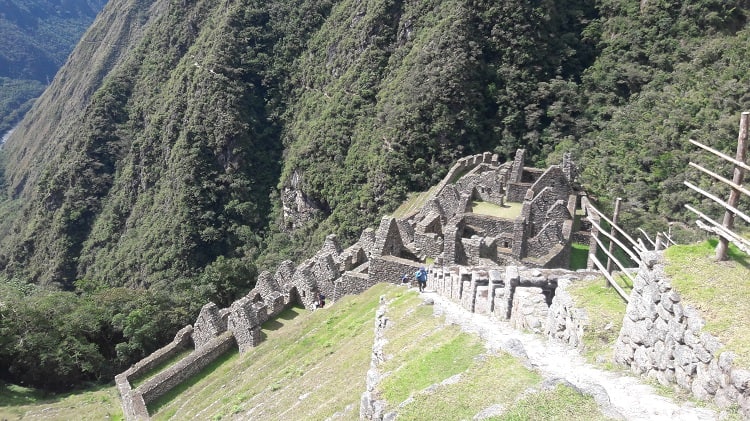
Wiñaywayna: Looking Down!
Here at Intipunku, around 3-4pm (depending on how fast you trek), you’ll get your first glimpse of Machu Picchu. After taking some time to appreciate Machu Picchu, and its unique setting somewhere between rugged Andean landscapes and Amazon Jungle, you’ll continue down to Machu Picchu. From the Sun Gate to the Watch Tower (the classic photo spot for Machu Picchu) the trail takes just 1 hour.
ENTERTAINMENT TIP: If looking for fun at night, or to watch sports during the day, or even a taste of home, visit the Wild Rover Hostel Cusco for great food, sports and beer! Entrance to their bar is free even for non-guests
According to the New Entrance Rules to Machu Picchu, trekkers arriving from the 2-Days / 1-Night Inca Trail now need to leave Machu Picchu (the Inca Trail permit doesn’t allow a visit). From here you can take the shuttle bus (30 mins) or hike (60 mins) to the village of Aguas Calientes below Machu Picchu. Here you will spend the night.
Bright and early the next day you will head back to Machu Picchu for a guided tour. Tours usually last 2 – 2 ½ hours. If you intend to hike Huayna Picchu then this is also possible, however you will need to purchase a completely new entrance ticket to Machu Picchu and Huayna Picchu, as entrance to Huayna Picchu is not included in the Inca Trail permit. Note, that we recommend trying to hike Huayna Picchu, as the alternative trek – the Machu Picchu Mountain Trek – offers very similar views to that of the Sun Gate (Intipunku).
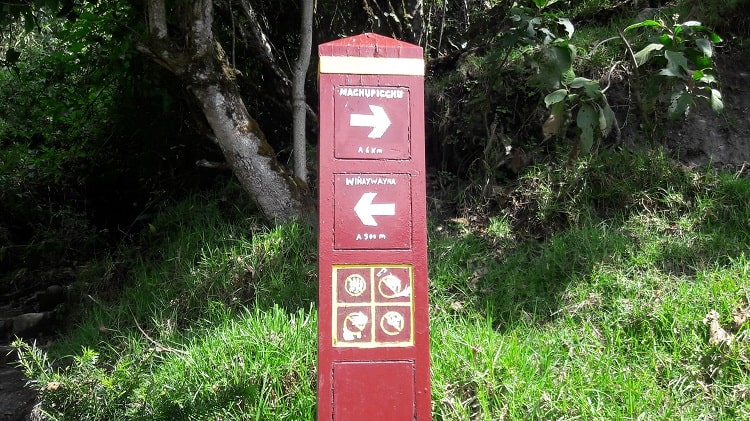
Difficulty of Trek
The 2-Days / 1-Night Inca Trail to Machu Picchu is considered a medium level trek. Most people with a reasonable amount of fitness can complete this trek. If you have any medical conditions that may affect your ability to complete the trek, it is recommended to seek medical advice before signing up. There is a certain amount of hiking up (and down) stone steps, which some people find is tough on their knees and back.
Best Time to Trek & Weather
There is not really a bad time to trek the Inca Trail, but it is probably worth avoiding January through until March, which has statistically the heaviest rain fall. There is also a chance of rain during November – December and April – May, but if you are prepared with a light rain coat or poncho, you should be okay. From June – October the weather is dry, and you can expect bight sunny days. Overage day time temperatures on the trail range from 15 – 30 Dec C (60 – 86 Deg F). The trail is closed for maintenance during all of February.
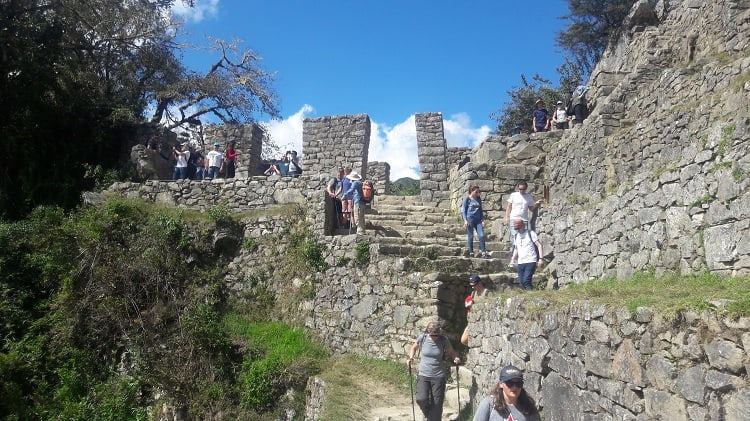
Intipunku (Sun Gate)
Clothing / Footwear
It isn’t really necessary to go all out on special footwear and clothing for this trail. Mostly you will be hiking on well-trodden stone trails, so regular tennis shoes / trainers are fine. If you hike in the wet season (Dec – April), then perhaps footwear with a bit of resistance to the water would be advisable. There are lots of biting bugs on the trail, so wear long trousers or shorts with deet based insect repellent. Light clothing on your upper half is all that is needed (plus insect repellent). It is also advisable to take poncho or light rain-coat (all year around). If you are an office bumpkin like me, and your feet aren’t used to lots of walking, make sure that you invest in a pair of good quality walking socks.
Packing List
Porters are generally not included by Inca Trail operators on the 2 Days / 1 Night Inca Trail, so you will most likely need to carry your own backpack. Use a 18 – 22 liter backpack, and take only what you need (nothing else). Here are my recommendations:
- Your passport (for entrance to the trail and Machu Picchu)
- 1 – 1.5 liters of water.
- Alcoholic gel
- Insect repellent (deet based is good)
- Sunblock, hat and sunglasses
- Light raincoat or poncho
- Change of clothes for your overnight near Machu Picchu (take only what you need)
- Camera
- Snacks
- Allow space in your backpack for your box lunch
- Walking stick with rubber tip (optional)
- A small roll of toilet paper
- A small pack of wet wipes
If you need to take extra equipment, then talk to your trekking company as additional porters can now be contracted to hike the trail. These are not cheap, and expect to pay anywhere from US$ 100 – 200 per porter. Alternatively, it is possible to send luggage on to Aguas Calientes using the Peru Rail luggage service. This is a little more complicated, as not all train schedules have the luggage service. Ask your trekking company for more details.
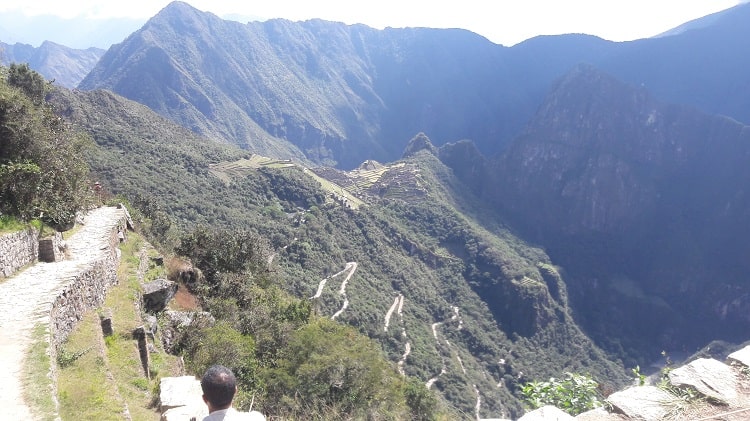
First View of Machu Picchu from Intipunku
Warning – Not for People with a Fear of Heights
The title of this section is fairly self-explanatory, but folk that have a fear of heights, this trek is not for you. Although for the most part, the trail follows a wide path, there are some narrower sections where you will find sheer drops of hundreds of meters. If you suffer from vertigo, then avoid this trek.
Trekking Operators & Pricing (2017)
We have no affiliations with trekking operators and don’t endorse any specific company, but these are a few of the most popular out there:
Always check what is included for the price! Does it include shuttle bus tickets to/from Machu Picchu? Does it include a box lunch? Does the price include credit card commissions, or is this an additional charge? Does the price include an overnight in Aguas Calientes, or is this an additional cost? Ask as much as you can, and don’t get short changed.
Alpaca Expeditions
Website: https://www.alpacaexpeditions.com/inca-trail-with-camping-2d1n/
Telephone: (+51) 84 254 278
Price: US$ 550 per person (shared Service, subject to available departures)
Llama Path
Website: https://www.llamapath.com/en/short-inca-trail
Telephone: (+51) 956 122 696
Price: US$ 595 per person (shared Service, subject to available departures)
SAS Travel
Website: http://www.sastravelperu.com/english/program/344/short-inca-trail-trek-to-machu-picchu-2day1night-group-service
Telephone: (+51) 984 652 232
Price: US$ 498 per person (shared Service, subject to available departures)
Map of Trek
(CLICK TO SEE THE LARGER VERSION)
YOU MAY LIKE

Lima to Machu Picchu – Agencies DON’T want you to read this!

#1 Rated Day Trips From Lima To Unforgettable Destinations
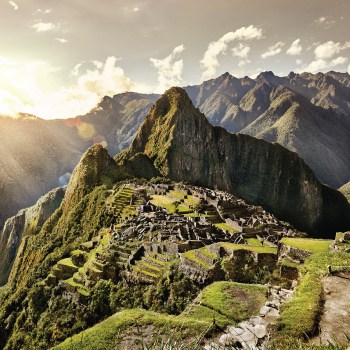
Everything You Need to Know to Avoid the Typical Tourist Mistakes At Machu Picchu

What NOT To Do When Visiting Rainbow Mountain
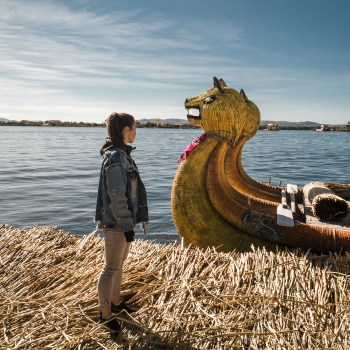
Spend 50% less and see 100% more in Peru
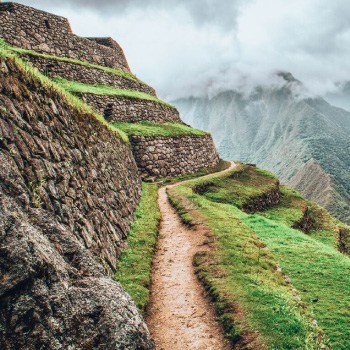
Machu Picchu Tickets – All You Need To Know!

These Hidden Destinations Just Outside Of Lima Will Blow Your Mind!

Peru – How to Avoid Being a Typical Tourist

OFFICIAL: This Company Was Voted The Best Way To Get Around Peru
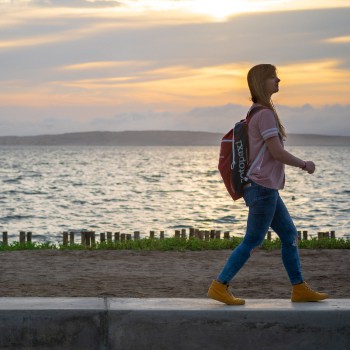
Peruvian Travel Secrets That Only The Locals Know


